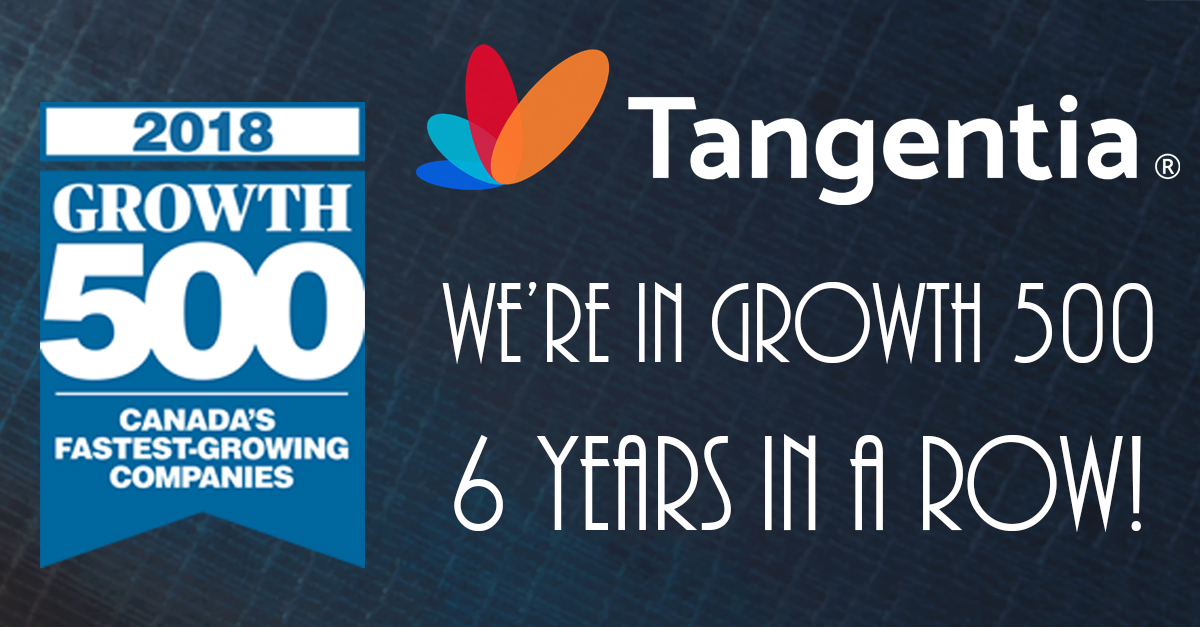Tangentia + Dynamics 365 Business Central – Cloud ERP made easy
The latest trends in the marketplace have shown that companies have begun to be more and more open to keep their data on the cloud. This is fast becoming true with their ERP systems. For Microsoft, it is not just a strategic decision to therefore re-brand their ‘on premise systems’ but a means of keeping up with the competition. Customers these days are not just looking for an ERP system that handles the finance and operations of the company but also embeds ecommerce solutions. This allows for a one stop shop cloud based solution that companies can exponentially benefit from.
Keeping the above in mind Microsoft has introduced ‘Dynamics 365 Business Central’ (formerly known as Microsoft Dynamics Navision) which is available on both “Premise” and on “Cloud.” Business Central offers organizations a single, end to end solution for managing finances, operations, sales and customer service and a solid opportunity to easily upgrade from entry-level accounting software and legacy systems.
Business Central is customizable and brings the full power of Dynamics NAV to the cloud. One of its most telling features – it provides businesses with tools that they can use to analyze their cash flow by analyzing historic data to make predictions for future periods. The cash flow forecast feature is made all the more dynamic as it can utilize the Azure Machine Learning to model various scenarios and provide groundbreaking insights into what to expect for the future. Azure Machine Learning allows the business to extend the time horizon for cash flow forecasts. It has the following models to calculate forecasts:
- ARIMA (Auto Regressive Integrated Moving Average)
- ETS (Exponential Smoothing State Space)
- STL (Seasonal Decomposition of Time Series by Loess)
- TBATS (Exponential Smoothing State Space with Box-Cox transformation, ARMA errors, Trend and Seasonal components)
What it does differently is that it applies advanced statistical methods to the historical data to generate data in the future and include that data when calculating the forecast. When we predict receivables or payables, we use the due date as a date field and not the document date or posting date, so we don’t need to define and apply a payment term to the predicted results.
Azure ML is free in Business Central; you just need to turn it on. If you have two years of data, you can expect to forecast values accurately for up to four months. Business Central has introduced a ‘threshold’ factor that can be adjusted in the Cash Flow Forecast setup. The field is called “Variance %” and allow you to specify range of deviation, plus or minus, that you’ll accept in forecast.
The Tangentia Advantage
Tangentia EDI Engine
Tangentia has been at the forefront developing custom integration solutions that has previously connected the client’s Microsoft Navision ERP system to their Electronic Data Interchange (EDI), ecommerce and Warehouse Management Systems. (WMS)
The Tangentia Navision Engine (TNE) has supported MS NAV version 4.0 all the way to MS Dynamics NAV 2018. As of May 2019, Tangentia Navision Engine also seamlessly integrates and connects your EDI trading partners with the Business Central Cloud ERP. TNE has the following features:
- Single user interface for all your EDI, WMS and ecommerce needs
- Guaranteed EDI connectivity to 2000+ retailers worldwide
- Supports ANSI X12, EDIFACT, RosettaNet, cXML, Tradacoms, ebXML etc.
- Lifetime EDI Compliance – no additional cost for trading partner mapping changes or label modification
- One-time flat EDI integration fee utilized across all trading partners
- Highly customizable to meet business processes that might vary from company to company


Tangentia RPA and AI
RPA is making a real impact in enterprise space and empowering knowledge worker by helping them focus on the more meaningful and value-added side of their work and offloading more mundane and repetitive tasks to an RPA powered robot. There is an enterprise workforce revolution underway led by RPA and AI/Cognitive technologies.
There is a plethora of solutions providers in this space, each with its own specialty. However, there are three main vendors that come to mind. They are – Automation Anywhere, Blue Prism and UiPath in alphabetical order. Among these, UiPath is probably the fastest growing since it has recently received funding from big Silicon Valley Venture Capital firms in series C and D rounds.
Gartner predicts that by 2022 worldwide RPA spending will total $2.4B with an expected CAGR upwards of 30% in the next five years.
Here are some of the trends:
- Digital Transformation: Traditional businesses are faced with competition from the likes of Amazon, Airbnb, Uber, Google, Microsoft and Facebook to name a few and are forced to change their business models to adapt to the new digital reality.
- The rise of the Omni channel: Consumers are increasingly preferring to do their shopping digitally and interact with merchants with minimum touchpoints in a seamless manner across all channels.
- Availability of Actionable Data: Digital businesses are able to collect data and actionable insights about their customers in real time and adjust to the market demand accordingly. For example, Uber rates go up if there is a high demand in an area for its rides on account of some event. Similarly, Airbnb is able to hike its listing rates based on the demand in an area.
- Scalability: It’s much easier to scale up if you are a digital business. It took much less time for Airbnb and Uber to overtake their traditional counterparts in terms of market size and market cap.
- Flexibility: Digital business is more efficient, responsive to customer needs and able to cross-sell.
Tangentia provides end to end implementation services around the three main automation solutions – Automation Anywhere, UiPath and Blue Prism. Some of the benefits of choosing Tangentia are:
- A strong commitment to client success over our own.
- A rich history of past experience in implementing RPA solutions.
- Knowledgeable resources with certifications in RPA solutions.
- Strong domain expertise in specialized verticals e.g. BFSI, Healthcare, Telecom, Insurance etc.
- A strong partner ecosystem that brings the best of breed solution offering.
- A delivery model that is global and based on Agile Methodology and best practices.
- A metrics-based approach to ROI.
- Good past client references
Identifying and working with a right partner is the most important and crucial step to ensuring a successful RPA journey.
Tangentia Procure-to-Pay
With Tangentia’s EDI, Automation, and Ecommerce services, we can provide a complete streamlined Procure-to-Pay process for the Global enterprise. The Procure-to-Pay (P2P) is an end-to-end process starting with requisitioning goods and services and ending with making payments for them.
The 7 Steps Procure-to-Pay process involves:
- Raising the Purchase Order
- Vendor confirmation of Purchase Order
- Advanced Shipment Notice
- Receipt of Goods
- Submitting Documents to Finance
- Vendor sending Invoice to Customer
- Final Payment to Supplier
This apparently simple process can be complex due to legacy systems, and errors from manual entries, leading to unnecessary costs. Implementing an Procure-to-Pay cycle can provide an opportunity to bring efficiency to the process and save costs.
Tangentia Order-to-Cash
With Tangentia’s EDI, Automation, and Ecommerce services, we can provide a complete streamlined Order-to-Cash process for the Global enterprise. Order-to-Cash (OTC or O2C) is the top-level business process for receiving and processing customer orders.
The order to cash process is simple and can be illustrated with the following steps:
- Customer sends a purchase order
- Vendor creates a sales order
- Vendor ships and delivers goods
- Vendor sends invoice to customer
- Customer pays the vendor
Order-to-Cash systems affect all areas of a business and are critical to operational success.
In a standard system, orders are received via different sales channels, such as phone, emails, fax, online channels or through sales persons. This input complexity added with other manual entries, makes the process error-prone and the system inefficient. Implementing an Order-to-Cash cycle can provide an opportunity to bring efficiency to the process and save costs.
With Tangentia’s EDI, Automation, and Ecommerce services, we can provide a complete streamlined Order-to-Cash process for the Global enterprise.
About the Author
The author, Akash Singh is the Head of Project Management Operations(PMO) at Tangentia. He oversees projects around EDI/ Ecommerce/ RPA and AI from a delivery standpoint ensuring client satisfaction and success.
Tangentia is an expert in implementing Digital Transformation solutions leveraging technologies like RPA, Artificial Intelligence, EDI and Ecommerce.
Tangentia implements solutions around Microsoft Dynamics 365 Business Central and you can learn more here.
To learn more about Tangentia EDI solutions Click Here
Get Started today
Interested in Automation but don’t know where to start? Looking for a reliable Automation reseller with the best possible pricing? Looking for somebody to help maintain, support and enhance your existing bots? Or just want to say hello? Contact us now. We promise a human will answer your query, not a bot.
Contact Us
































